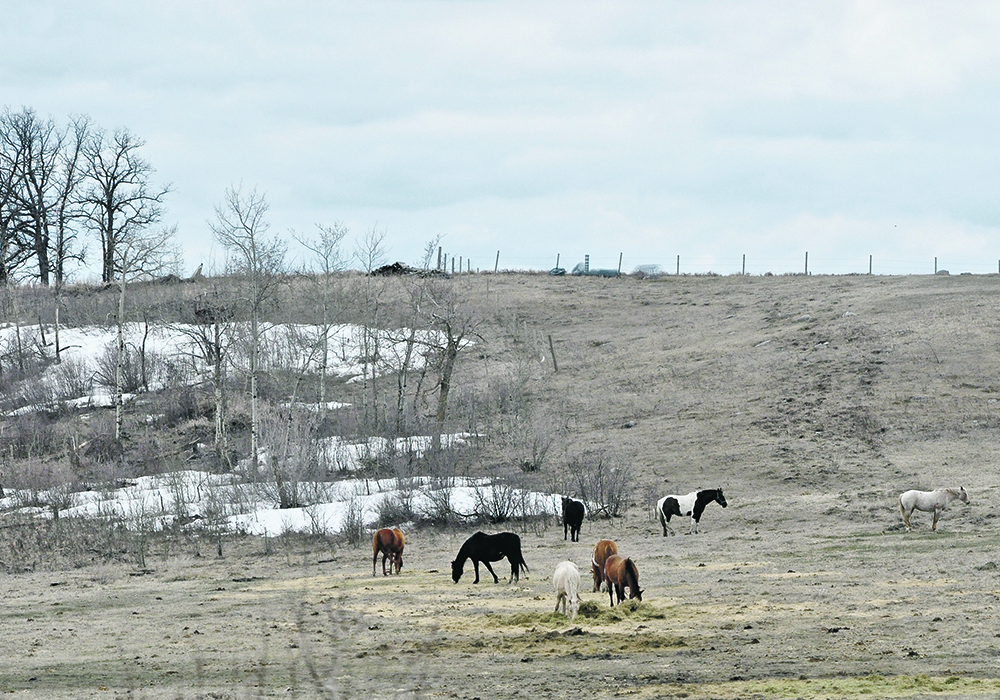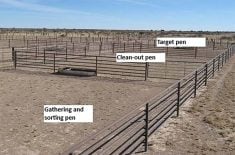Spring has arrived on the Prairies and that means our horses are shedding their puffy winter coats in favour of their short, sleek summer look.
With less hair on their bodies, it is a good idea to take a few minutes to assess visual health indicators.
Spring is an important time to determine your horse’s body condition. The body condition score is an objective scale used to assess body fat deposits along the neck, ribs, withers, back and tail head. It is more commonly used than an actual body weight measurement since few have access to a horse-sized scale. A lower body condition score indicates a thin horse, while higher scores indicate an overweight condition.
Read Also

Beef cattle more prone to trace mineral deficiencies
The trace mineral status of our cows and calves is a significant challenge for western Canadian producers and veterinarians.
There are many online visual guidelines and resources you can check out for more information on assessing your horse. Your veterinarian can also score your horse at their next visit. An overly fat or thin horse may be disguised by their full winter coat, particularly if they are handled less frequently in the colder months.
With the shorter spring hair, you can more easily check visible fat pads such as a cresty neck and feel locations on the ribs and base of the tail for the amount of fat coverage. Knowing how the herd fared during winter can provide important feedback for planning for next winter’s feeding regime to make sure you don’t over or under deliver the groceries.
Shorter summer hair can also expose previously unrecognized lumps and bumps. These may occur anywhere on the skin and also over joints and tendons. It would be helpful to note the size, shape, location and appearance of any newly discovered lumps. This can then be shared with your veterinarian during your next visit to facilitate a thorough examination.
Lumps over joints may be fluid-filled outpouchings of the joint space or actual bone changes that may indicate arthritis. Skin lumps could be tumours and should be examined by a veterinarian.
Spring is an ideal time to part the hair and give the skin a thorough inspection. Look for patches of scaly skin that may have been previously overlooked. Scaly skin restricted to one location can indicate the start of a sarcoid (common skin tumour of horses) or a case of ringworm (a common fungal infection of the skin).
The infection known as rain rot creates small tufts of pus and skin, most often along the back. Although unusual, horses can be infested with lice, which are visible to the naked eye.
With some coconut or other oil, soften and peel back the chestnuts and ergot of each leg. Be sure to give each of these structures a good visual check while you’re at it.
Take a look at the muscle definition all over the body and note any muscles that are not symmetrical from side to side. Generally, muscles should look the same on either side of the body. If one side appears to have shrunk or atrophied, this may be related to some localized muscle or nerve damage.
A lack of spring shedding should be a red flag for horse owners. This is a key sign of equine Cushings disease, also known as pituitary pars intermedia dysfunction (PPID).
The hair coat of affected horses and ponies sheds only partially or not at all between seasons. This hair is characteristically longer, curlier and more dense than the typical summer coat. In this disease, hormone abnormalities originating in the pituitary gland of the brain lead to abnormal hair shedding. Other clinical signs of PPID include muscle loss, abnormal fat deposition, laminitis (founder) and abnormal sweating. This condition can be managed through diet, medication and supportive care.
As you put the shedding blade and curry combs to good use this spring, take some time to assess the outward appearance of your horse and check with your veterinarian if you find anything unusual or concerning.















